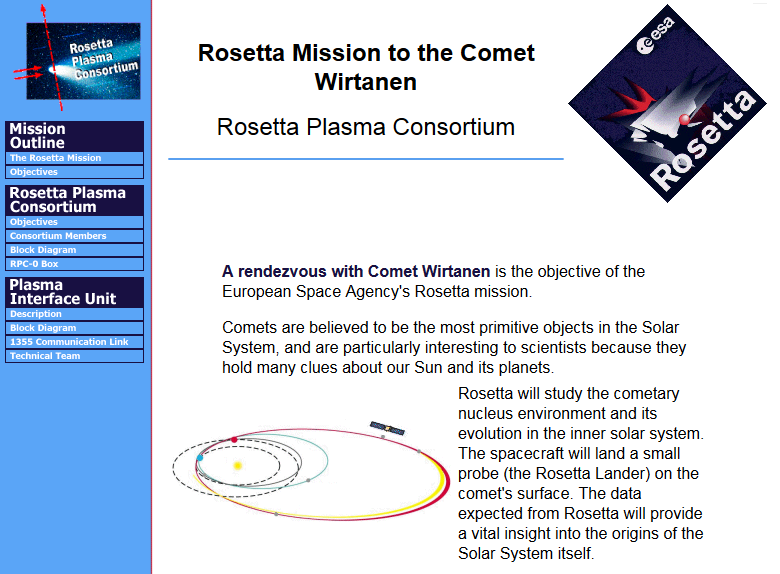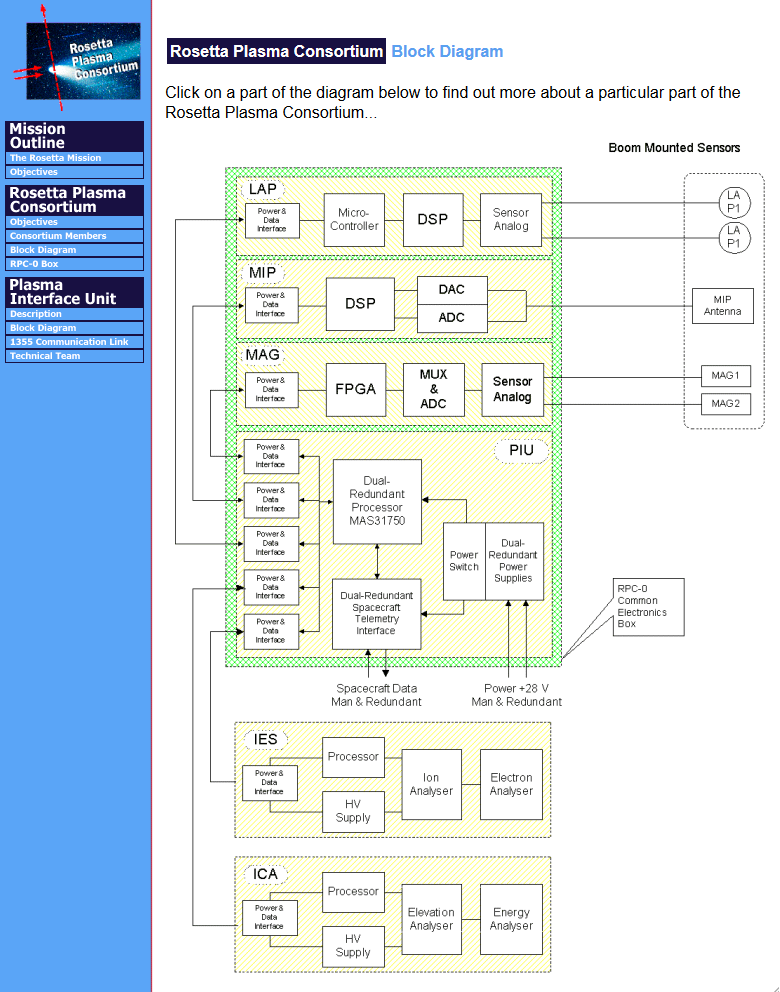Rosetta was a European Space Agency mission to rendezvous with a comet in order to study the processes which led to the formation of not only comets, but also the planets, our Sun and the rest of the Solar System.
Rosetta arrived at comet 67P/Churyumov–Gerasimenko (instead of the comet Wirtanen as originally planned) on 6 August 2014 after a 10-year journey around the solar system. It accompanied the comet along its orbit for just over two years observing its evolution as it became more active while approaching the Sun. The Philae lander detached from the Rosetta spacecraft and landed on the comet’s surface on 12 November 2014 to carry out in-situ studies of the composition and structure of the nucleus material. The mission ended on 30 September 2016 when the Rosetta spacecraft landed on the coment via a controlled impact.
I spent the summer of 1999 working with the Rosetta team in the Space and Atmospheric Physics Department at Imperial College. The team was responsible for designing the Plasma Interface Unit (PIU) which acted as an interface between the spacecraft and the five instruments that constituted the Rosetta Plasma Consortium (RPC), and part of my work was on specifying the cable harness between the two, and developing VHDL code for the FPGAs that controlled the system.
I also developed a website for the team — this has now been updated and redeveloped to fit the Imperial College house style, but still retains many of the diagrams that I created.

The website homepage

A page showing a block diagram of the five RPC instruments and the PIU